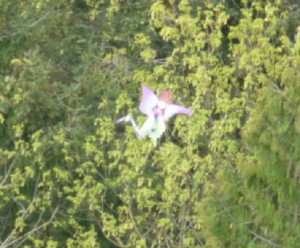Children’s toys are for more than play, they are for engaging, creating, and learning. Next time it’s windy, how about some science fun with kites?
 Kites are exciting. Getting a kite to fly is quite a challenge. For most things, kids have learned that when they pull an object up, it goes up and when they pull it down, it goes down. For kites though, once they are in the air, to make them go up, we need to pull down. The string on a kite teaches about tension, about two forces pulling in opposite directions. This same idea is used in all kinds of structures, like buildings and bridges. Flying a kite is one way to feel the force of tension.
Kites are exciting. Getting a kite to fly is quite a challenge. For most things, kids have learned that when they pull an object up, it goes up and when they pull it down, it goes down. For kites though, once they are in the air, to make them go up, we need to pull down. The string on a kite teaches about tension, about two forces pulling in opposite directions. This same idea is used in all kinds of structures, like buildings and bridges. Flying a kite is one way to feel the force of tension.
Flying a kite is quite an accomplishment. The wind has to be strong enough but not too strong, but how can you tell? One of the ways to do that is by trying and science is all about asking questions and finding out.
 Kites need big, open spaces free of things that can snag a kite. One morning we saw a huge kite spread out over many trees. Since it was at the top, it wasn’t being flown in the trees. There is a big open field at a school in the area, but still a fair distance away so the kite may have traveled all the way from there. This isn’t easy to learn.
Kites need big, open spaces free of things that can snag a kite. One morning we saw a huge kite spread out over many trees. Since it was at the top, it wasn’t being flown in the trees. There is a big open field at a school in the area, but still a fair distance away so the kite may have traveled all the way from there. This isn’t easy to learn.
Kids aren’t the only ones that play with kites. There are contests and events all over the world and some very complicated kites with multiple strings. Kite flyers can make them loop and twist and dance in the sky. For these, there is a great deal of science involved.
There are some wonderful suggestions for ways to make kites with kids that are easy to fly. We’ve done the one in this video at kindergarten and it flies well, as long as it’s not too windy. Dental floss works for a light string. Would your child enjoy some science fun with kites?
☼Another way to play in the air, is on Facebook. Join Mrs. A and come play.
